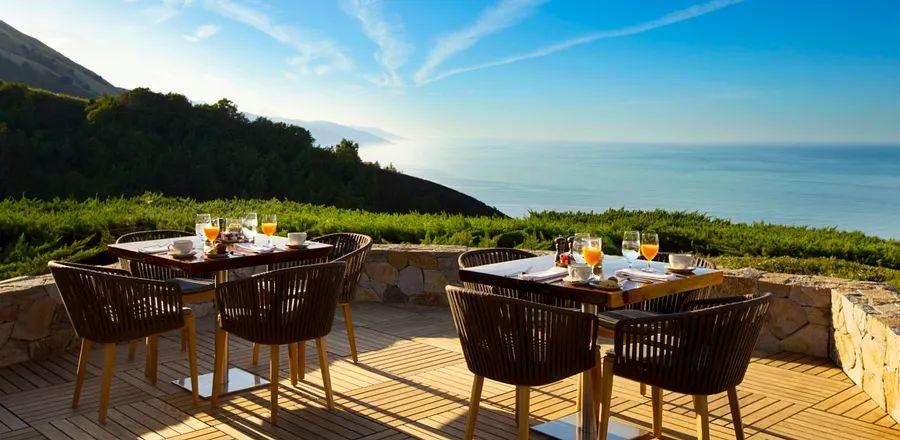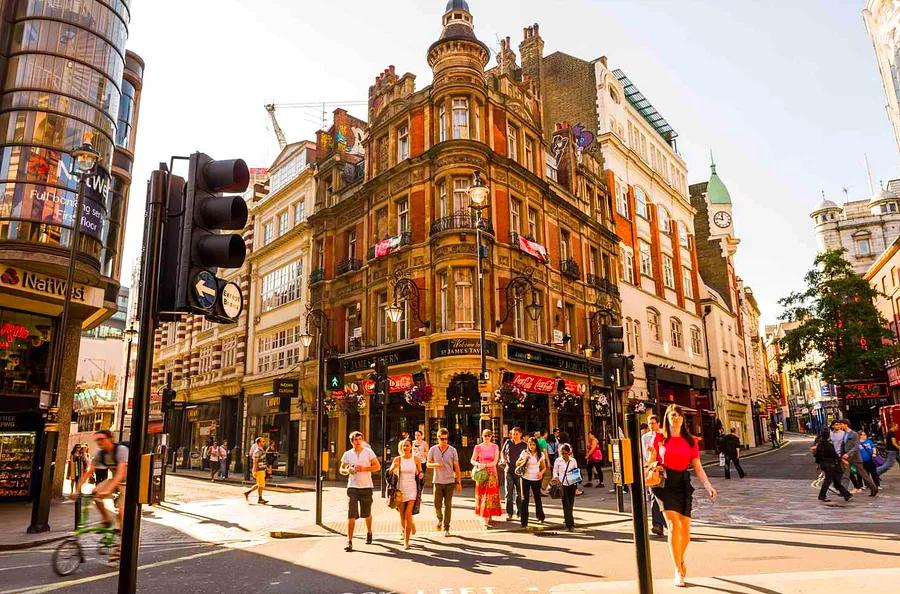Introducing the New All-Inclusive Experience

Late in the fall, as dusk settled over Big Sur’s breathtaking 90-mile coastline, my friend and I arrived at Alila Ventana Big Sur. Within moments, we were gently transported from our cozy wooden cabin in an electric golf cart, winding through the towering redwoods. Soon, we found ourselves on a vast patio overlooking the Pacific, mingling with around 40 other adults, wrapped in warmth from heat lamps and surrounded by stars. The sounds of clinking cutlery and soft conversations accompanied us as we perused the dinner menu, our only concern. Our friendly waiter, always ready with a smile, had an unwavering yes for our requests—blankets, appetizers, anything we desired. He even checked in on our dog’s dietary needs with a friendly inquiry.
A serene adults-only escape for those over 18, Alila Ventana Big Sur began its journey in 1975 as the Ventana Inn, established by entertainment producer Larry Spector on 243 acres. Following a lavish renovation, it reopened in 2017 as the first U.S. property of Singapore’s Alila Hotels & Resorts, now under the Hyatt umbrella. In 2021, it emerged post-pandemic as an all-inclusive destination, allowing guests to book accommodations, activities, and meals all at once.
The offerings at Alila Ventana Big Sur redefine what all-inclusive truly means. Beyond complimentary meals and snacks in your room, guests enjoy morning meditation, yoga, tai chi, daily hikes, foraging adventures, bike tours, afternoon tea, wine tastings, astrology insights, forest bathing, and complimentary transport within three miles. Indulge in happy hours with cocktails and snacks, and explore the surrounding nature with available gear like Yeti coolers, Patagonia daypacks, beach blankets, hiking poles, and more. Pets are pampered too, with their own bandanas and dining options. Guests can even partake in vegetable harvesting for local charities or opt for additional experiences, such as reiki sessions in the redwoods ($60) or coastal tours on California condors with the Ventana Wildlife Society ($200).
The next morning, I stepped outside my cabin into the warm sunlight, my dog by my side, as a bee buzzed nearby among the wildflowers. The shimmering Pacific beckoned beyond a fence, while inside awaited a breakfast of brûléed grapefruit and huevos rancheros. More than just a meal, a world of possibilities seemed to unfold—where I could explore and experience freely—well, almost freely. I wondered to myself, why hadn’t I done this before?
The goal in life is to find happiness. The best place for happiness is here. The best time for happiness is now.
In 1947, born in Antwerp, Gérard Blitz began his work in France, focusing on assisting Belgian escapees from concentration camps by helping them regain their health and happiness. His solution involved establishing a small chain of hotels in the Alps, near Chamonix, where these former prisoners could unwind and rejuvenate, enjoying food and amenities at no cost to alleviate any material concerns.
This experience later inspired Blitz to create the “vacation formula,” leading to the launch of Club Mediterranée in 1950, the first all-inclusive resort. It welcomed vacationers to a tent village in Spain’s Balearic Islands, embodying his vision of utopia: “The goal in life is to find happiness. The best place for happiness is here. The best time for happiness is now.”
Club Med made its North American debut in 1968 with the opening of Club Med Fort-Royal (now Club Med Caravelle) in Guadeloupe, French West Indies. The following year, they launched Club Med Buccaneer’s Creek in Martinique, and in 1976, Club Med Cancún in Mexico. In 1981, Gordon “Butch” Stewart opened the first Sandals all-inclusive resort in Jamaica, followed by the launch of Beaches for families in 1997. For many U.S. travelers, these brands introduced them to all-inclusive vacations, creating a model characterized by enclosed experiences and abundant buffets.
Over the last two decades, the all-inclusive model has evolved greatly in scope, approach, and commitment to guests and local communities. Sandals has enhanced its dining options with “Island-Inclusive” products collaborating with local restaurants. Today, almost all Club Med resorts hold Green Globe certification, with nearly 94 percent of jobs filled locally and an average of 56 percent of fresh food sourced from local suppliers. Club Med is also investing in luxury; by May 2024, its global resort portfolio will transition to premium offerings, including 21 five-star accommodations and a French sailing yacht in its Exclusive Collection.
“This shift towards luxury wasn’t merely about keeping pace with trends; it was about recognizing the changing preferences of travelers who seek comfort while maintaining authenticity,” states Carolyne Doyon, CEO of Club Med North America and the Caribbean.
In the meantime, hotel chains like Hyatt and Hilton, relatively newcomers to the all-inclusive market, have embraced immersive cultural experiences both on-site and off, significantly enhanced their food and beverage offerings, and created tiers of upscale options for travelers who prefer to know their expenses upfront. For many industry insiders, the all-inclusive sector is currently the most dynamic area for innovation.
“Fifteen years ago, many luxury travelers wouldn’t even consider an all-inclusive option,” notes Josh Turner, a travel advisor with Pro Travel International. “However, all-inclusives have proven effective, and not solely from a cost perspective. When a traveler enjoys an experience comparable to what they would find at a non-all-inclusive luxury resort, it benefits both sides.”

Courtesy of Hyatt
When Hyatt ventured into the all-inclusive market in 2013, it became the first major hospitality brand to introduce new brands specifically tailored to the rapidly expanding all-inclusive segment,” according to the company. Today, its Inclusive Collection exemplifies the notion that all-inclusive offerings can vary greatly. Following its $2.7 billion acquisition of Apple Leisure Group in 2021, Hyatt now boasts the largest luxury all-inclusive portfolio globally, featuring 10 unique all-inclusive brands and over 120 resorts across 13 countries and 30 destinations.
“Hyatt stands as the global leader in the luxury all-inclusive sector, and we are dedicated to enhancing the appeal of this increasingly favored segment,” remarks Melanie Benozich, associate vice president of marketing and global branding for Hyatt Inclusive Collection. She notes that the diverse array of all-inclusive brands enables the company to “cater to our guests and World of Hyatt members at every stage of their lives.”
The diversity within this portfolio is impressive. In April 2024, Hyatt introduced the adults-only Hyatt Vivid brand in Cancun, which features a friendly ambiance and activities like Spanish lessons and pottery classes. In May 2023, Hyatt launched its most luxurious all-inclusive option, Impression by Secrets, marketed as “ultra-exclusive” and characterized by the “highest standard of luxury service”—including butler service, complimentary laundry, terrace whirlpools, stocked wine fridges, private spa cabins, and curated dining menus crafted by chefs from Michelin-starred establishments. Guests can seamlessly transition from a coffee tasting to sunset paddleboarding in just hours.
A key reason for Hyatt's substantial investment in all-inclusive resorts was the surge in customer demand following the pandemic. Travelers expressed a strong preference for environments with clear safety protocols where they could enjoy fulfilling vacations with minimal planning. Additionally, the trend of multigenerational travelers has surged post-pandemic, as all-inclusive resorts cater well to families with diverse age groups. As of April 2022, World of Hyatt members can redeem their points at more than 100 luxury all-inclusive resorts, significantly altering both bookings and interest, according to Hyatt.
Marriott, the world’s largest hotel chain, has also recognized all-inclusives as a vital growth area, and its investments have proven fruitful: in just three years, Marriott expanded from one all-inclusive resort to 30, generating $21 billion in revenue in 2022—a 50 percent increase from the previous year. The variety of offerings is extensive. Marriott CEO Anthony Capuano has described the Westin Porto de Galinhas as “extremely successful as a family all-inclusive,” while the upcoming W Hotel in the Dominican Republic (set to open in spring 2024) is touted as an “adults-only playground.” Notably, an all-inclusive Ritz-Carlton, another of Marriott’s luxury brands, is reportedly in development for the first time.
Hilton, the fourth-largest hotel chain in the U.S., has similarly invested in the all-inclusive market, now boasting 13 all-inclusive properties, including four new locations in Mexico and the Caribbean since mid-2021. Leading this initiative is Nicole Tilzer, vice president of all-inclusive and resort strategy at Hilton. Tilzer shares her enthusiasm for changing outdated perceptions of all-inclusive resorts—such as long buffet lines, colorful wristbands, and a lack of connection with the surrounding community—while acknowledging these issues are indeed present. “Before I entered this segment, I would have considered myself someone who thought, This isn’t for me,” she admits. “But it’s been a joy to explore this evolution and demonstrate to travelers that this is a legitimate category worth considering.”
Building that trust, according to Tilzer, hinges on delivering on promises of luxury, excellence, and genuine all-inclusiveness. She compares it to car commercials, stating, “You see this stunning vehicle, but when you visit the dealership, it’s often, Oh, the model we advertised is actually the premium version.” She adds, “[At all-inclusive resorts] there will always be chances to upsell. Want a romantic dinner for two on the beach? Absolutely. But you should be able to enjoy the model you saw on TV for the price you paid.”
Mike Taylor, chief development officer at the French hospitality company Accor Group, which entered the all-inclusive sector in 2016, agrees that transparent pricing is appealing to customers, along with a focus on value. “If someone is seeking a wellness experience, they might want to indulge in three treatments a day,” he notes. “They can attend yoga, enjoy a massage, and get a pedicure, all without worrying about the costs.”
The outlook for all-inclusive hotels and resorts is promising. An April 2022 study commissioned by Wyndham Hotels & Resorts found that 75 percent of travelers believe the best way to travel is by booking an all-inclusive trip. Furthermore, regarding stress levels, there’s encouraging news for this growing hospitality segment: 77 percent of respondents felt that an all-inclusive vacation is the least stressful travel option. Personal finance firm NerdWallet has even dubbed 2024 the “year of the all-inclusives” due to the surge in luxurious all-inclusive offerings. Additionally, the hashtag #allinclusive has amassed around 500 million views on TikTok.
Travelers can expect to see expansion into regions not typically associated with all-inclusive resorts—Europe, for instance. In mid-2024, Hyatt will unveil the new Zoëtry Halkidiki in Greece, a beachfront resort with views of Mount Olympus and the Aegean Sea. The company will also expand its presence in Bulgaria and venture into Portugal with the Dreams Madeira Resort Spa & Marina, set to debut in mid-2024 and featuring seven bars, an on-site water park, and a 9,800-square-foot spa. Hilton, which operates four all-inclusive resorts in Turkey and Egypt, is also exploring growth opportunities beyond the Caribbean, including the Middle East and Africa. Accor plans to quadruple its all-inclusive Rixos portfolio, targeting 100 properties by 2027.
Club Med, a pioneer in the all-inclusive sector, continues its expansion with plans for three to five new resorts each year. In 2024, the company will unveil four premium resorts in China and France, and by 2026, it aims to launch a new North American resort alongside a unique beach and sMytouri resort in KwaZulu-Natal, South Africa, allowing guests to surf and view wildlife. Additionally, later this year, Club Med will enhance its offerings with new entertainment. From June to September 2024, Club Med Québec Charlevoix will feature “Elevation,” a series of three themed festivals: epicurean, astro-circus, and wellness.
Alongside the rise of “nontraditional” destinations, Turner observes that the all-inclusive model is being adapted in various ways: some resorts may not be completely all-inclusive but offer travelers the choice to add a meal plan. This signifies more innovation and a broader array of options for vacationers.
According to Hilton’s Tilzer: “[The all-inclusive resort] is truly for everyone. While it may not suit every vacation you take, it’s a category that has something to offer for everyone.”

1

2

3

4
5
Evaluation :
5/5